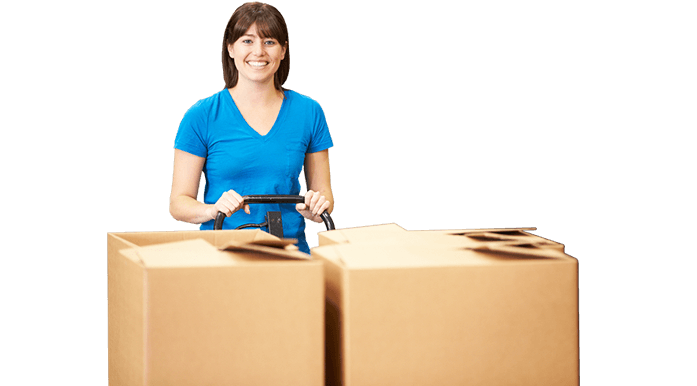Essential Packing Tips for an Organized House Move
Posted on 14/06/2025
Essential Packing Tips for an Organized House Move
Moving to a new home is an exciting chapter in life, but it can also be stressful and chaotic if not properly managed. One of the best ways to ensure a smooth transition is by adopting essential packing strategies that keep you organized throughout your house move. This comprehensive guide outlines proven packing tips for an organized home relocation, helping you minimize stress, prevent damaged belongings, and enjoy a seamless moving experience.

Why Organization Matters During Your House Move
A disorganized move can lead to lost or broken items, wasted time, and unnecessary frustration. Staying organized while packing ensures that:
- You can easily locate essential items upon arrival
- Your possessions arrive safely and intact at your new address
- The unpacking process is faster and more efficient
- You experience less stress and confusion on moving day
By following some tried-and-true house move packing tips, you set yourself up for a successful move and a fresh start in your new home.
Start Early: The Key to an Organized Pack
One of the most crucial steps in moving is giving yourself plenty of time to plan and pack. Begin sorting items and packing non-essentials several weeks ahead of your move date. A common mistake is underestimating how long it takes to pack a household, so aim to start early to avoid last-minute stress.
- 8 Weeks Before: Declutter, plan your packing strategy, and gather supplies.
- 6 Weeks Before: Begin packing seasonal or rarely used items.
- 4 Weeks Before: Focus on books, decor, and out-of-season clothing.
- 2 Weeks Before: Pack lesser used kitchenware and bedrooms.
- 1 Week Before: Pack daily essentials in an "Open First" box.
Declutter Before You Pack
Moving offers a fantastic opportunity to sort through your belongings and decide what you truly want to bring to your new home. Decluttering before packing for a move not only cuts down on moving costs, but it also makes unpacking easier and your new space less cluttered.
- Donate: Gently used items that you no longer need but are still in good condition.
- Recycle: Broken or unusable items that can be recycled.
- Sell: Valuable things that you no longer use, like electronics or antiques.
- Dispose: Anything that's broken, expired, or beyond repair.
Tip: Declutter room by room, and make three separate piles: keep, donate, and toss/sell.
Gather Top-Quality Packing Supplies
A truly organized house move starts with the right supplies. Investing in quality materials keeps your possessions safe and streamlines the packing process. Here are the must-have packing materials:
- Sturdy Boxes: Get a variety of sizes, and avoid overfilling large boxes to prevent breakage.
- Packing Tape: Use high-quality tape to securely seal all boxes.
- Bubble Wrap & Packing Paper: Protect fragile items from damage.
- Permanent Markers: For labeling boxes with room destinations and contents.
- Labels or Color Stickers: Speed up organization and unpacking.
- Furniture Covers & Stretch Wrap: To keep furniture clean during transport.
- Moving Blankets: Prevent scratches and dents.
Organize as You Pack: Sorting and Labelling Boxes
Efficient packing is not just about putting things in boxes; it's about staying organized during your house move. Sorting and labelling every box clearly is essential for a seamless relocation.
Pack by Room and by Category
It's tempting to mix items from different rooms, but this creates chaos when you arrive at your new home. Instead:
- Pack each box with items from a single room or category.
- Label boxes on all sides--not just the top.
- Include a brief list of contents and the destination room (e.g., "Kitchen--Glasses & Plates").
Use a Color Code System
Assign a unique colored sticker or tape to each room. This makes it easy for movers and family members to know exactly where each box belongs at a glance.
Number Your Boxes and Track Inventory
Maintain a master list (on paper or digitally) with each box's number, contents, and designated room. This way, you can verify that everything arrives at your new home and locate specific items quickly after moving in.
Packing Strategies for Different Household Items
Different items require different packing techniques. Here's how to pack various household goods for an orderly move:
Fragile Items (Glassware, Porcelain, Antiques)
- Wrap each item individually in bubble wrap or packing paper.
- Fill box gaps with crumpled paper or foam peanuts to prevent shifting.
- Clearly mark the box as "Fragile" on all sides.
- Pack heavier items at the bottom and lighter ones on top.
Clothing and Fabrics
- Use wardrobe boxes for hanging clothes to save time on re-hanging.
- Roll or fold clothing to minimize space and wrinkles.
- Pack off-season clothes first, daily wear last.
Kitchenware
- Bundle utensils together and tape handles for easy unpacking.
- Stack plates vertically, like records, to reduce breakage risk.
- Use original boxes for small appliances if available.
- Disassemble any detachable parts and pack separately.
Electronics
- Take photos of cable setups before disconnecting devices.
- Use original packaging or sturdy boxes with ample padding.
- Label cords and accessories for each device.
- Pack screens upright and mark as "Fragile."
Books and Documents
- Use small boxes--books get heavy very quickly.
- Pack books flat to prevent warping.
- Carry important documents and valuables with you.
Create a Moving Essentials Box
An "Essentials Box" (sometimes called a "First Night Box") contains everything you'll need right away in your new home. This is one of the most effective packing tips for a smooth house move. Include:
- Toiletries and prescription medications
- Basic kitchen items (plate, cup, utensils, coffee/tea)
- Phone chargers and electronics
- Toilet paper and paper towels
- Change of clothes and pajamas
- Bedding and towels
- Important documents
Clearly label this box "OPEN FIRST" and keep it easily accessible in your vehicle or at the front of the moving truck.
Stay Organized on Moving Day
On the day of your move, coordination is key. Use these moving day tips for an organized home move:
- Direct Movers: Use your color code or labelling system to help movers unload boxes to the right rooms.
- Check Inventory: As items are loaded and unloaded, tick them off your checklist to avoid lost belongings.
- Protect Floors and Doorways: Place blankets or pads to prevent damage at both old and new homes.
- Supervise Fragile Items: Personally transport high-value or fragile items when possible.
Unpacking: Keep the Organization Going
Unpacking can be overwhelming, but with a little planning, you can maintain the organization from your move:
- Unpack one room at a time, starting with the kitchen and bedrooms.
- Break down boxes as you go to keep your new space tidy.
- Refer to your inventory list to ensure all boxes arrived safely.
- Arrange furniture and larger items first, then focus on decor and smaller objects.
Bonus Tips for an Efficient and Organized Move
- Enlist Help Early: Ask friends, family, or book professional movers to secure your preferred moving date.
- Photograph Valuable Items: Document condition in case of insurance claims.
- Reserve Parking: Check for parking permits or reserve space for the moving truck at both locations.
- Take Measurements: Ensure large furniture fits through doors and hallways in your new home.
- Update Your Address: Notify the post office, banks, and subscriptions to redirect your mail.
Common Packing Mistakes to Avoid When Moving House
- Procrastination: Putting off packing until the last days causes disarray and rushed decisions.
- Overpacking Boxes: Boxes that are too heavy risk breaking and cause injuries.
- Skipping Labels: Unlabelled boxes make unpacking a time-consuming guesswork.
- Ignoring Valuables: Never leave cash, jewelry, or critical documents in the moving truck unattended.
- Forgetting an Essentials Box: Don't start your new chapter frantically searching for daily necessities!
Tips for Packing with Kids or Pets
- Involve Older Kids: Let them pack their rooms and label their boxes.
- Set Aside Toys or Comfort Items: Ensure beloved items are easily accessible for a sense of normalcy.
- Arrange Care: Have friends or sitters look after young children and pets on moving day for safety and reduced stress.

Eco-Friendly Moving and Packing Tips
Moving doesn't have to be wasteful! Try these green organizing and packing strategies:
- Reuse boxes from local stores or friends.
- Use towels, linens, and clothing to wrap fragile items.
- Rent plastic moving bins instead of buying cardboard.
- Recycle all packing paper, cardboard, and bubble wrap after your move.
Conclusion: Start Your New Chapter Organized
A successful move is within your reach. By following these essential packing tips for an organized house move, you can dramatically reduce stress and chaos. Start planning early, stay organized, and embrace this exciting new phase with confidence. A well-organized move lays the foundation for a happy and harmonious life in your new home!
Wishing you a smooth, organized, and joyful house move!






